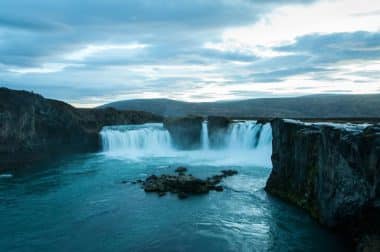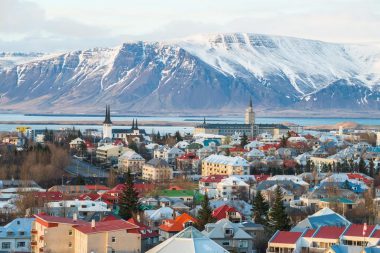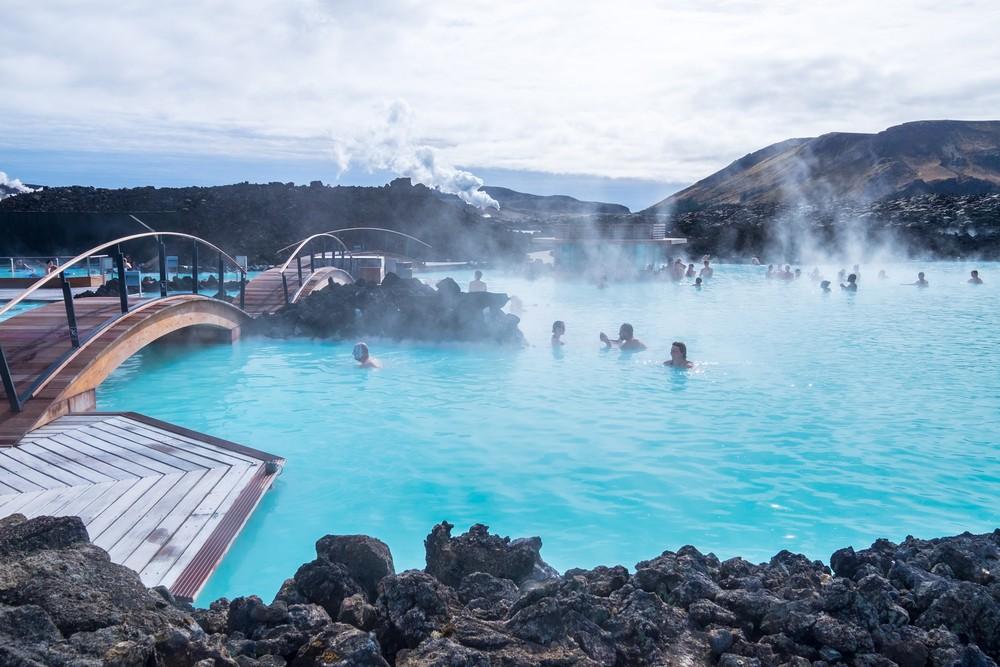When the mountains shine even under dark clouds, then you are in Iceland. Here, mosses and grasses stretch up to the peaks and create an extraordinary landscape. After their stay on this relatively young island, many a holidaymaker raves about a very special light that he has encountered there. Nature is free in Iceland, and it presents itself in abundance. With impressive waterfalls, thundering rivers, the flaming colors of a far too short summer and a wonderland in winter. Iceland is a piece of Europe that is as rough as it is tender and distant and, as a whole, the backdrop of a grandiose spectacle. This island is born of fire and its people live in the permanent awareness that a volcano could awaken from its long slumber tomorrow.

This is what the earth could have looked like on the third day of its creation story. Fire and ash dominate the scenery at many points in Iceland, because almost three quarters of the earth’s mass is plaything of the elements. Anyone who decides to go on a round trip to Iceland undoubtedly has sympathy for the great freedom. And this in all seasons, because when the island takes off its green dress and the time span between day and night becomes shorter and shorter, a very special magic sets in. In the metropolis of Reykjavik, the lanterns on the streets hardly ever go out and the romantic little churches on the fjords shine in an unusual light.
The world struggled to pronounce the name of Eyjafjallajökull without an accident when it besieged large parts of Europe with its cloud of ash in 2010. The eruption of the volcano in Iceland was a grandiose spectacle of unpredictable elements. But the people on the island know that they owe their existence to volcanism and thus to the elemental force of the earth’s interior. And Iceland also owes its warmth in winter to the volcanoes, because many inhabitants draw the power of district heating from the embers of the depths.

In view of the force of the wet element, which plunges 60 meters into the depths of the photogenic Skógafoss waterfall, many vacationers feel very small and insignificant. The southern coast of Iceland in particular is like a fairytale world. Almost all the rocks there are rugged, and the masses of water push over their edges to disappear in a spray and find themselves in a blue lake. A rainbow is reflected in the light of the sun. This is an encounter with a land full of extremes and incomparable spectacles of nature.
Iceland’s scenic diversity is also astonishing on the Snaefellsnes peninsula, where the 1,500-metre-high stratovolcano towers over everything. This is where the Snaefellsjökull National Park expands. The most visited waterfall in Iceland is Gullfoss, which plunges over two cascades over seventy meters. A monument was erected here that honours a farmer’s daughter who once campaigned for the waterfall to be preserved in its originality and not used to generate energy. According to legend, the Christianization of Iceland began at Godafoss, the so-called “Waterfall of the Gods”.
Iceland is also a model country for round trips because it is manageable: three hundred kilometers wide and five hundred kilometers long. The warm swimming pools, which are fed by the boiling water of the geysers, are called “pots” here and are particularly popular with locals and holidaymakers in winter. On clear winter evenings, the fireworks of the colors of the Northern Lights can also be seen in Reykjavik, the northernmost capital of Europe. The Aurora Boraelis is a nocturnal magic on days when the sun says goodbye to Iceland for a long time. But this is another reason why this island is an ideal year-round destination.
The most important information and facts about a holiday in Iceland
Iceland, the magical island in the far north, fascinates with its unique nature, spectacular landscapes and impressive geological wonders. Whether volcanoes, glaciers, waterfalls or hot springs – a holiday in Iceland promises unforgettable experiences. In this article you will find all the important information to plan your trip to Iceland perfectly. The best time to visit depends on what you want to experience in Iceland.
- Summer (June to August): Perfect for outdoor activities such as hiking, camping and exploring the highlands. The days are long, the temperatures are pleasant (10–15 °C) and many roads are open inland.
- Winter (October to March): Ideal for aurora hunters. Winter also offers the opportunity to experience Iceland’s snowy landscape and activities such as ice cave tours.
- Mid seasons (April/May and September): Fewer tourists, milder prices and a mix of winter and summer attractions.
Getting to Iceland
Iceland is easily accessible from Europe and North America.
- By plane: Keflavík International Airport is located about 50 km from Reykjavik. There are direct flights from many European cities, including Frankfurt, Berlin and Munich.
- By ferry: If you want to travel by car, you can take the ferry from Denmark to Seyðisfjörður in East Iceland.
Transportation in Iceland
- Hired car: The most flexible way to explore Iceland. An off-road vehicle is recommended if you want to go to the highlands.
- Public transport: Buses connect larger cities, but are less convenient for remote locations.
- Organized tours: Ideal for travelers without a car. There are numerous providers for day and multi-day tours.
Sights in Iceland
Iceland is a country full of natural wonders. Here are some of the highlights:
- Golden Circle: Visit the Strokkur geyser, Gullfoss waterfall, and Thingvellir National Park.
- Vatnajökull National Park: Home to the largest glacier in Europe and impressive ice caves.
- Blue Lagoon: A geothermal spa that offers pure relaxation.
- Southern coast: Spectacular waterfalls such as Seljalandsfoss and Skógafoss, as well as the black sand beach Reynisfjara.
- North Iceland: Lake Mývatn and the Asbyrgi Gorge are breathtaking natural wonders.
- Westfjords: Less visited, but full of unspoiled beauty.
Special activities
- Observe the Northern Lights: The best chances are in winter when the night is clear.
- Whale watching: Numerous boat tours depart from places like Húsavík.
- Glacier hikes: An adventure on ice for all ages.
- Ride: Icelandic horses are known for their special tölt and are suitable for riding tours.
- Geothermal baths: In addition to the Blue Lagoon, there are many hot springs such as the Myvatn Nature Baths.
Practical travel tips
- Currency: The Icelandic Crown (ISK). Card payment is widespread.
- Language: Icelandic. However, English is spoken almost everywhere.
- Weather: Fast-changing and unpredictable. Warm, windproof and rainproof clothing is essential.
- Cost: Iceland is expensive. You can save money through self-catering and affordable accommodation.
- Safety: Iceland is one of the safest travel destinations in the world.
Travel information Iceland
| Capital | Reykjavík |
|---|---|
| Form of government | parliamentary republic parliamentary democracy |
| Currency | Icelandic krona (ISK) |
| Area | approx. 103,125 km² |
| Population | approx. 350,710 (2018) |
| Languages | Icelandic |
| Electricity grid | 230 volts, 50 Hz |
| Area code | Phone +354 |
| Time zone | UTC±0 |


